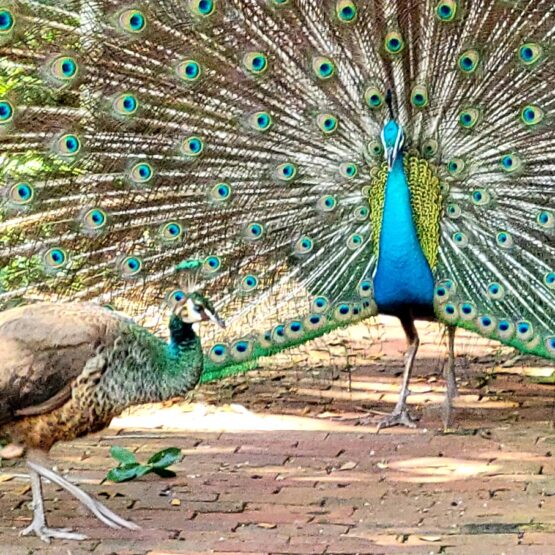We’ve described how we prepare the soil in our beds for planting – now it’s time to discuss how we get our plants started. Because we are in South Florida, our prime time for cultivating seedlings is in the fall.
We basically have three methods for starting our plants in the garden:
- Planting seeds in flats for transplanting seedlings later
- Planting seeds directly into the garden beds to sprout there
- Buying small starter plants to put directly into the beds
We definitely prefer to start our plants from seed, for a number of reasons. First, when you purchase seeds as opposed to starter plants, there’s a much greater variety to choose from. We also like cultivating them from their very beginnings in our own organic soil and supplements. And it’s much less expensive than buying plants. There is also the chance of introducing pests and/or diseases that are brought in on starter plants. Last but not least, who doesn’t love the hands-on experience and good feeling of engaging in a plant’s growth every step of the way?
The needs of plants vary, and some do better with one of the methods above over the others. For example, tomatoes need to be started in flats; beans need to be direct seeded into beds; and for most of our herbs we buy the starter plants.
For an idea about what particular plants we start in flats vs. direct seeding into beds, see our post Yesss!! Fall Planting, Part I. About half or more of our seedlings are started in flats, so here is some info and tips for using this method:
Planting seeds in flats for transplanting later
Our soil mixture is so vital to the success of the seedling. We have tried many different combinations, following advice of experts over the years, and based upon our experience, this is what we now use. Thoroughly mixed together:
- 48% homemade compost
- 48% peat
- 4% worm castings (very potent & very expensive, so it’s used sparingly)
See our post How Do We Prepare the Soil for Planting? for more info on the above ingredients.

Steps for Planting:
- Once the potting soil is thoroughly mixed, the trays (we call “flats”) are filled up loosely, not packed. They can be watered in advance of planting if desired (we typically don’t).
- Seeds are planted, usually two per cell, and covered with a thin layer of soil. The depth of planting depends upon the seeds, per packet instructions. A general rule of thumb is that a seed should be planted at the depth of its diameter size. So tiny seeds are planted very near the surface, larger seeds go deeper.
- We are careful to label the rows of our seedlings, with the name and variety of the crop, date of seed planting, and seed company. That way can track how the seeds did from that particular company, and reorder if we love the crop!
- The flats are thoroughly watered (with added microbes or organic fertilizer) and kept in a shady area until the seeds sprout, then they’re moved to a sunny area. I find nothing more exciting than seeing those tiny little sprouts pushing up through the soil – it’s like watching their birth!
- It is very important to keep the seedlings watered. Once or twice a day should suffice, depending on how dry they are (flats tend to dry out rather quickly due to the small size of the cells).
- We also protect our flats from torrential rains by housing them on a table that is covered above with shade cloth. The cloth is pulled back to allow s
 un in as needed.
un in as needed. - After a few weeks, when the sprouts are growing well, they will need to be moved out of the small cells – as their root space and nutrition there will wane, and they may become “spindly.” We will either transplant the seedlings into 4 inch pots or directly into beds. This decision is based upon many factors: space in the beds, size and strength of the seedling, which plants do better (e.g. tomatoes) in pots for a while first, etc.
- If the seedlings go into 4 inch pots, the same care continues. Every two weeks we will fertilize them again to keep the nutrition of the soil up to par. When the time is right, they will be planted in a bed, and well on their way to becoming a mature, thriving and giving plant!





